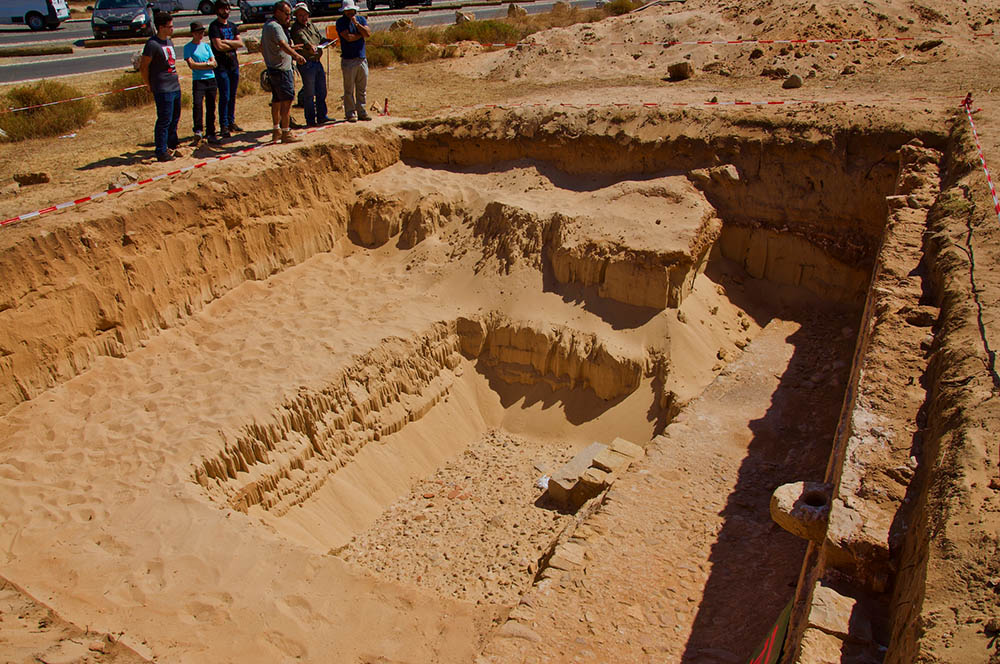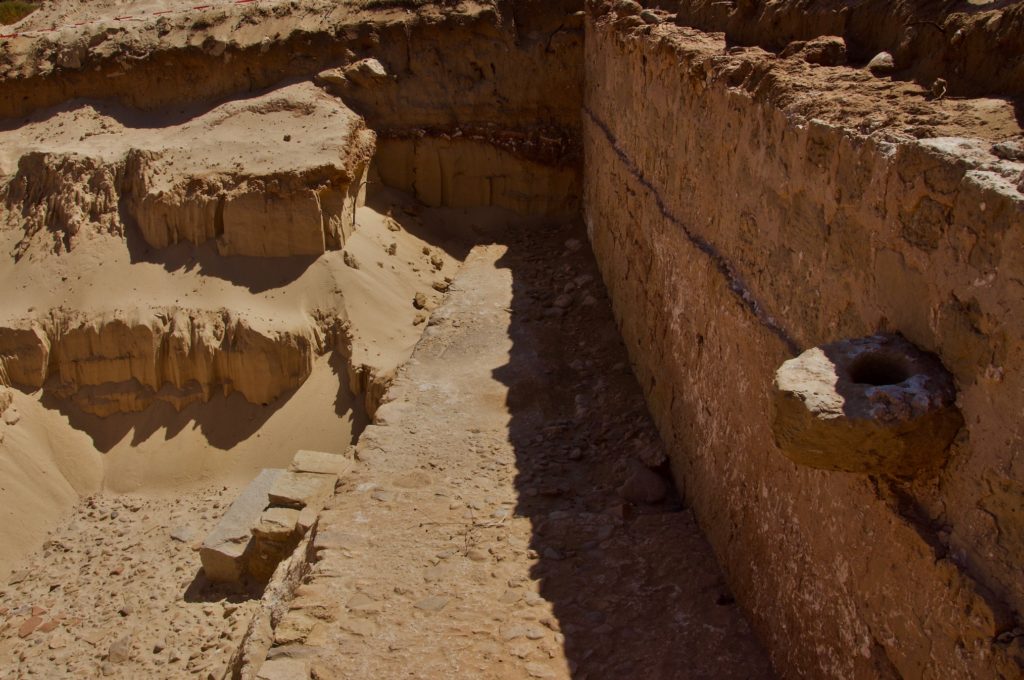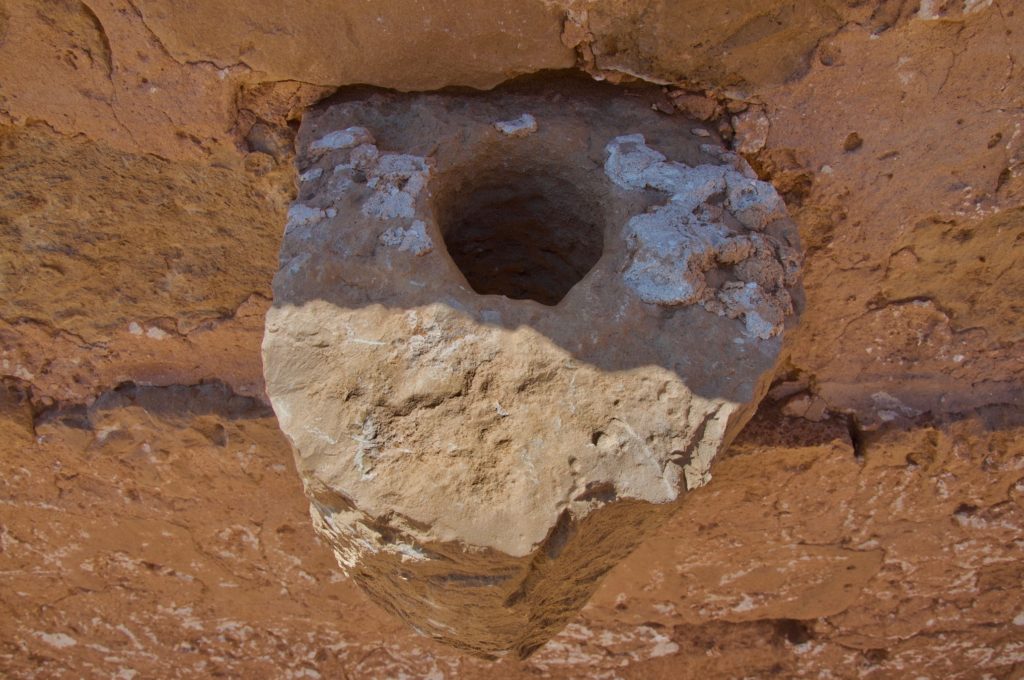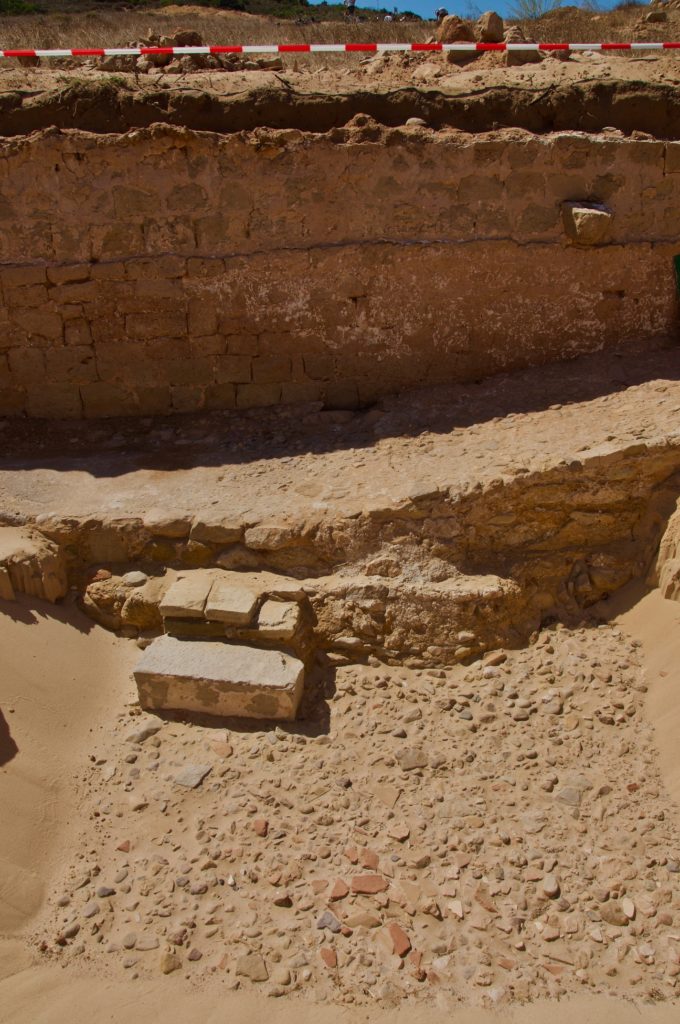The Roman port in the best state of conservation identified to date in Portugal has just been discovered on the beach at Boca do Rio, on the coast of Vila do Bispo, by a Portuguese-German team from the Universities of Algarve and Marburgo, in partnership and with the logistical and financial support from the Municipality of Vila do Bispo.
Currently located in a dry area, this structure is formed by an imposing limestone ashlar pier with more than 40 meters in length, from which perforated stones stand out for mooring boats, a ramp and a stairway to access the water of the old paleoestuary of the mouth of the river.
During the Roman period, the sea entered the land, forming an extensive lagoon, the current Paul da Boca do Rio/Lontreira, on whose right bank an important complex for the processing of fish preparations was developed, especially from the end of the XNUMXnd century. AD, served by the now discovered port.
This entire industrial complex and its port were part of a villa Maritime under investigation since 2016, with a large house facing the sea from which various mosaics, painted stuccos and many other objects have been collected that document the daily life and activities of our distant ancestors.
The Roman fishing site was abandoned in the first half of the 1755th century, being occupied again with a tuna fishing frame in the XNUMXth century and, again, after the XNUMX tsunami, in the XNUMXth century.
These frames from the modern era (re)used the Roman structures founded on the dunes to build their buildings that can still be seen there today.
The site of Boca do Rio, internationally known for being one of the places that best preserves the record of the tsunami that followed the earthquake of 1755, which devastated Lisbon, Cádiz (in Spain) and much of the Algarve coast, also reserves a huge archaeological interest.
In addition to the newly identified port structure, there are, under the dunes, several factories that served to produce fish sauces and pastes, the famous garum of the Romans, presenting, like the port, a truly exceptional state of conservation on the scale of the ancient Roman Empire.
The archaeological work carried out on that beach is part of the research project “Boca do Rio – a fishing site between two seas”, coordinated by professors João Pedro Bernardes, from the Center for Studies in Arts, Archeology and Heritage (CEAACP) of the University from the Algarve, and Félix Teichner, from the University of Marburg, at the Center for Research Hosting – Archaeological Research Nucleus of Vila do Bispo.






















Comments